Rice wine is an essential ingredient in Southeast Asian cooking. It comes in a variety of colors and flavors depending on the region of origin. Rice wine might be difficult to find at your local grocery store, so be sure to look for an Asian market for the best selection. Alternatively, most rice wines can be purchased online as well.
There are plenty of great substitutes for rice wine if it is not available, or you are looking for a non-alcoholic alternative.
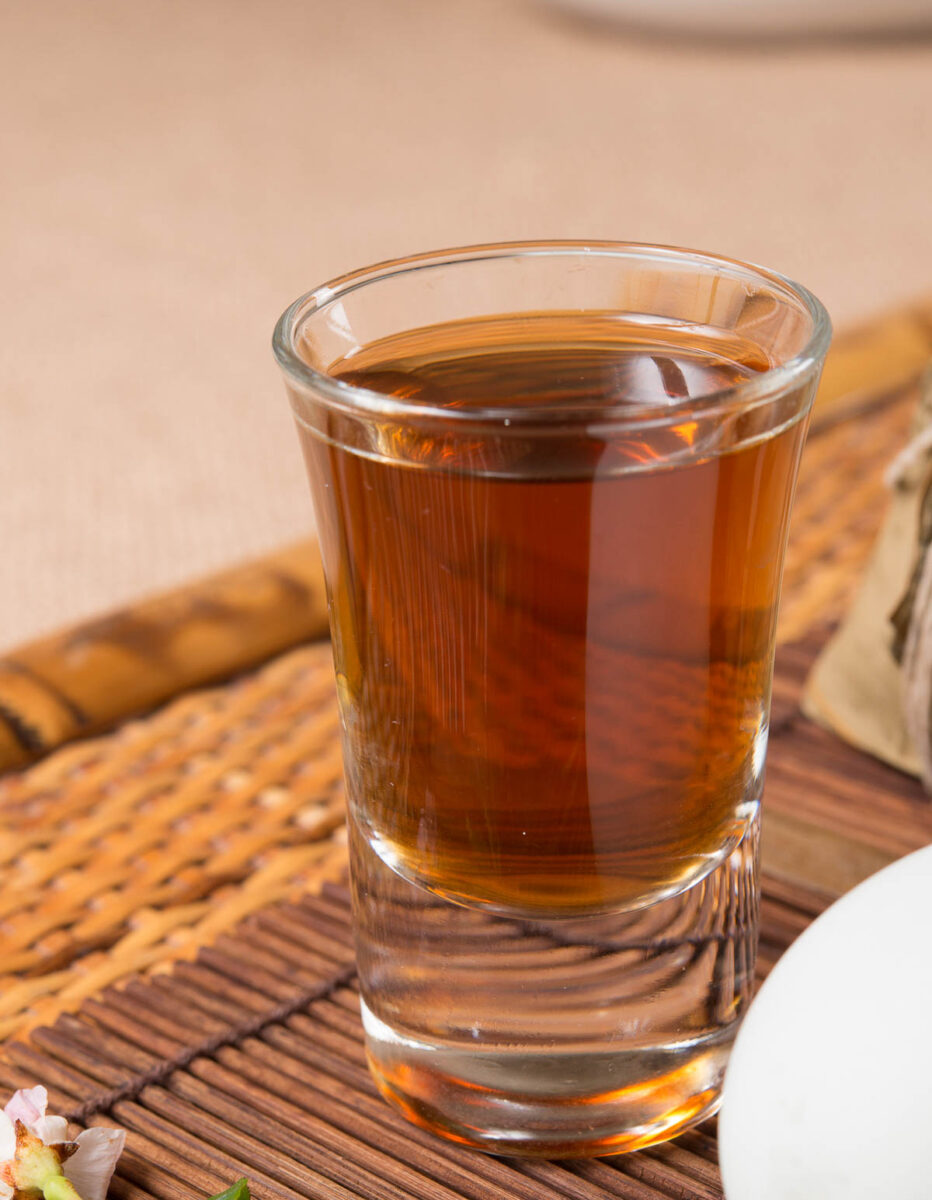
Jump to:
What Is Rice Wine?
Rice wine originated in Southeast Asia. It can be used for cooking and drinking and is present in most Asian cuisine. Whereas red and white wines are made using fermented fruit (grapes as an example), rice wine is made from fermented glutinous rice.

Understanding Regional Differences
There are many different types of rice wine. The flavors and colors vary by region, so knowing the origin of your recipe is important when selecting the best substitute. The regional differences may have an effect on its taste and use.
Below are some examples of rice wine by region. Take a moment to review each to see which region best matches your recipe. For example, substituting rice wine vinegar in a Japanese dish will require choosing an alternative that is crisp, rich, or fruity, like Japanese rice wine (sake).
If the origin of your recipe is unclear, you may have to do some quick research to see where it is from and how you can match its flavor profile. Or– if you’re feeling creative– simply look at the recipe’s ingredients and choose a substitute you think will go best with the recipe!
China: Mijiu and Shaoxing
Mijiu is a rice wine from China. It is commonly clear in appearance. The flavor is more neutral and has a balance of acidic and sweet. Notably, this type of rice wine has a saltier taste than most.
Shaoxing wine is another traditional rice wine from China. It has a lighter flavor than the Mijiu variety of rice wine mentioned above. Shaoxing is frequently used when preparing fish or meat in stir-fry. It adds an aromatic flavor to the recipe and eliminates the poignant smell of raw fish and meat.
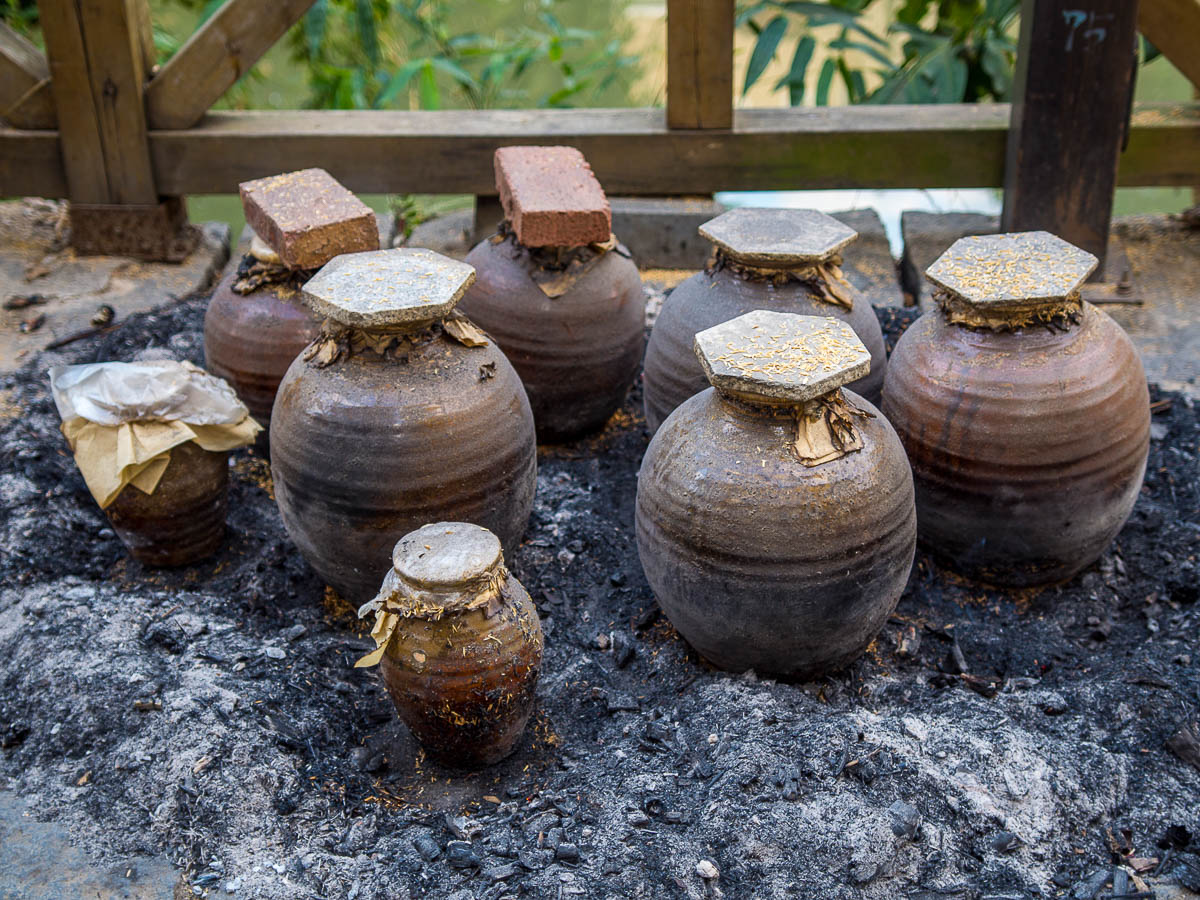
Japan: Sake and Mirin
If you’ve ever been to a sushi restaurant, you probably know that Japanese rice wine is called sake. Sake is a fermented rice wine that is polished to remove any bran. Good sake contains clean water, koji mold, yeast, and high quality rice.
Sake ranges from clear to milky in appearance and consistency, and it is known for its delicate flavor. The taste is mild with flavors ranging from crisp to rich fruity notes.
Mirin is another common Japanese rice wine. This variety is made from fermented steamed glutinous rice. It is mixed with rice liquor which creates the fermentation process. Mirin can have a stronger taste that is a sweeter flavor than Shaoxing rice wine.

Vietnam: Ruou
Ruou is a Vietnamese rice wine. It is made from glutinous and non-glutinous rice. It usually is clear but can be cloudy in appearance if unfiltered.
This kind of Vietnamese rice wine is often infused with different herbs and flowers. Red glutinous rice wine is common in Vietnam. It has a unique taste that is sweet and smooth.
Philippines: Tapuy
Tapuy is a rice wine from the Philippines made from fermented rice. It has a slightly sweeter flavor and it can be a little coarse in texture. Tapuy has a similar taste and color to sherry. It is frequently used as a digestif or glaze.
Korea: Makegeolli and Soju
Makegeolli, or makkoli, is a Korean rice wine. Makegeolli is unfiltered with a milky, almost cloudy appearance. It is effervescent, or fizzy, with a sweet and tangy flavor. The texture can be a bit chalky and the aroma ranges from floral to fruity.
Soju is another Korean rice wine that is made from rice, sweet potato, or barely. Soju tends to be similar to makgeolli but with a slightly sour flavor profile.
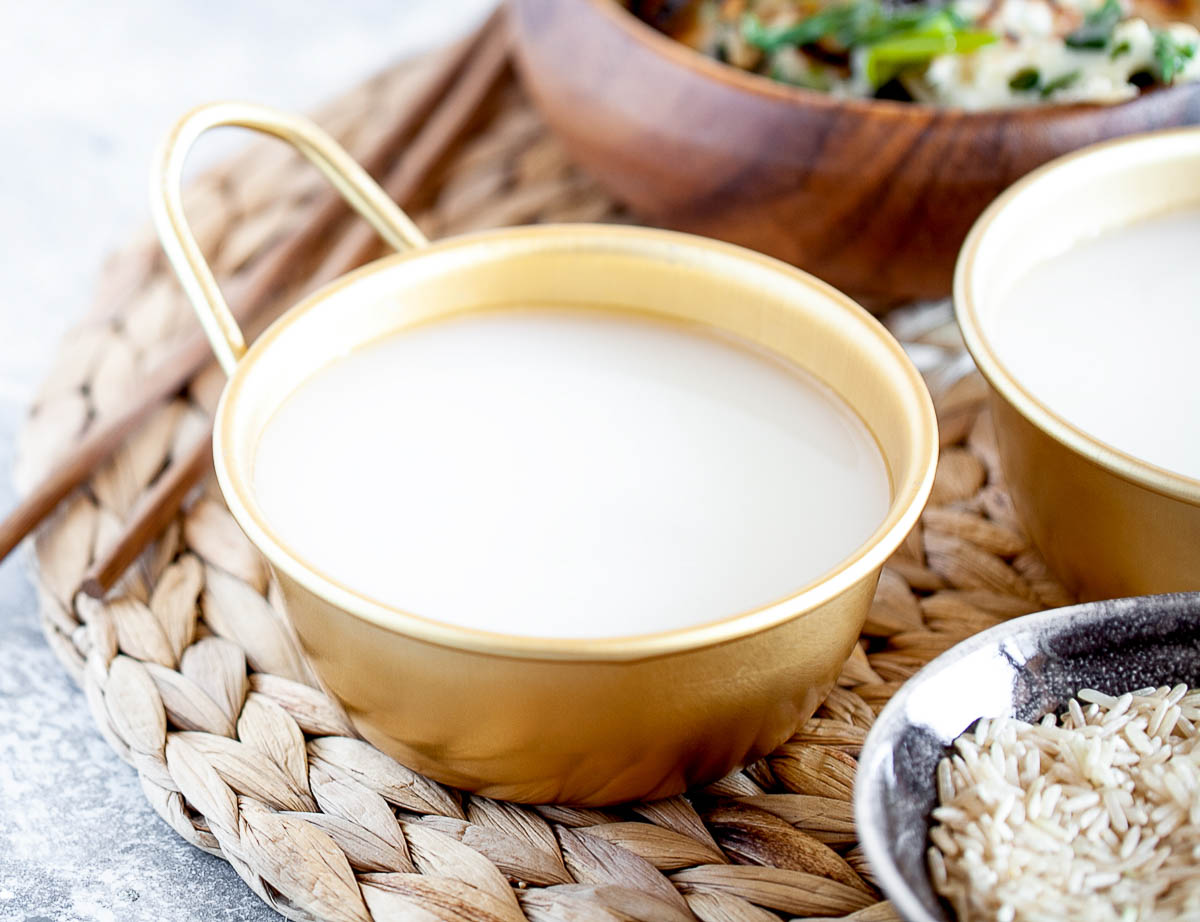
Best Substitutes for Rice Wine
Flavor, texture, and consistency play a big role in choosing the right substitute for any dish. As mentioned above, these flavors and textures may vary by region.
If you have not already, review the section above to see how the rice wine in your recipe may be uniquely influenced by the region it is from.
Rice Vinegar
Rice vinegar is another close substitute for rice wine. That said, rice vinegar has a similar but stronger flavor than rice wine.
Many traditional Asian dishes use rice vinegar, especially for salad dressings and rice dishes. Rice vinegar adds a tang to recipes, however, it can be too dry at times. Adding a little grape juice or apple juice to rice vinegar will bring sweetness to the dish.
A bit of lemon or lime juice can also be added to bring some citrus flavor to your recipe.
Substitution: Use 2:1 ratio. For example, 1 tablespoon rice wine = ½ tablespoon rice vinegar. If using additional juices, be sure to use less rice vinegar to maintain the ratio.
Best for: Asian dishes, dressings, stir fry, and other tangy recipes.
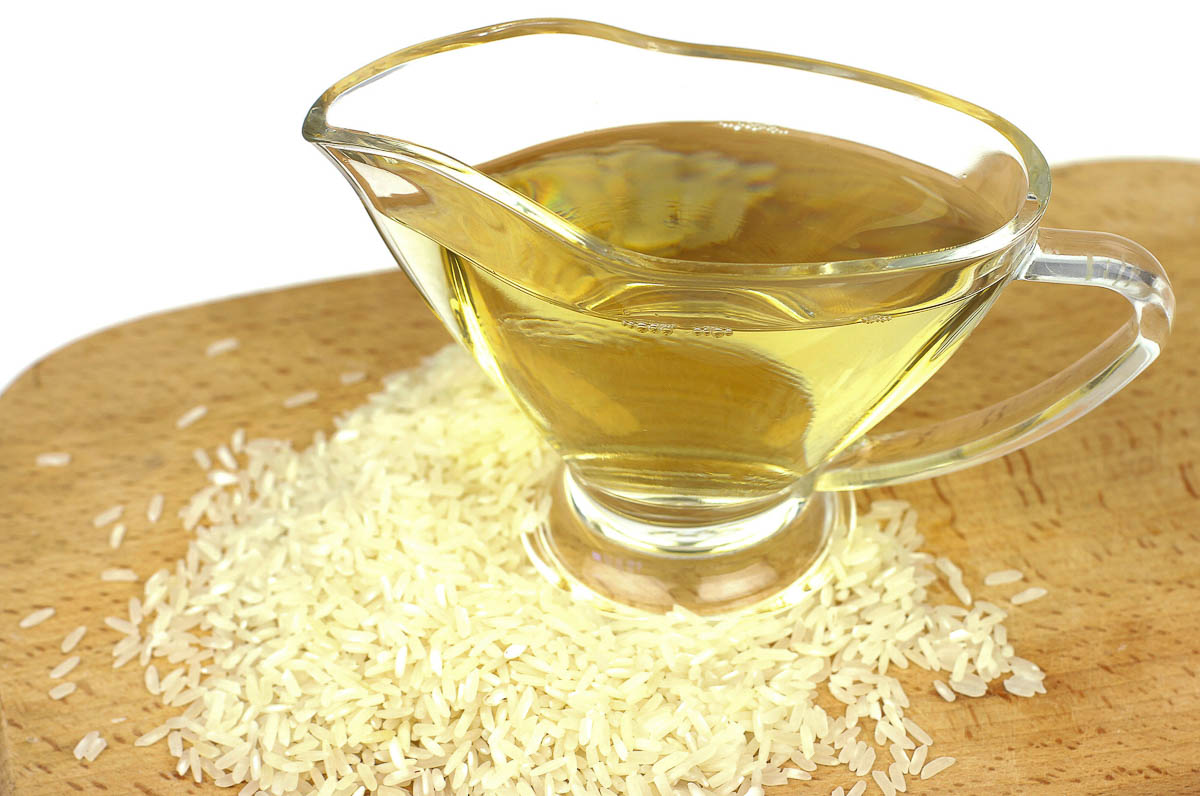
White Wine Vinegar
White wine vinegar is one of the best substitutes for rice wine. It is the closest substitute to rice wine when it comes to sweetness, acidity, and tang.
White wine vinegar has a subtle presence in recipes with a balance of fruitiness and acidity. White wine vinegar has a crisp finish that cuts through flavors nicely. White wine vinegar and rice wine are evenly substituted.
Substitution: Use 1:1 ratio. For example, 1 tablespoon rice wine = 1 tablespoon white wine vinegar
Best for: Subtle flavor. If you are uncertain of the regional origin of your recipe, consider using white wine vinegar.
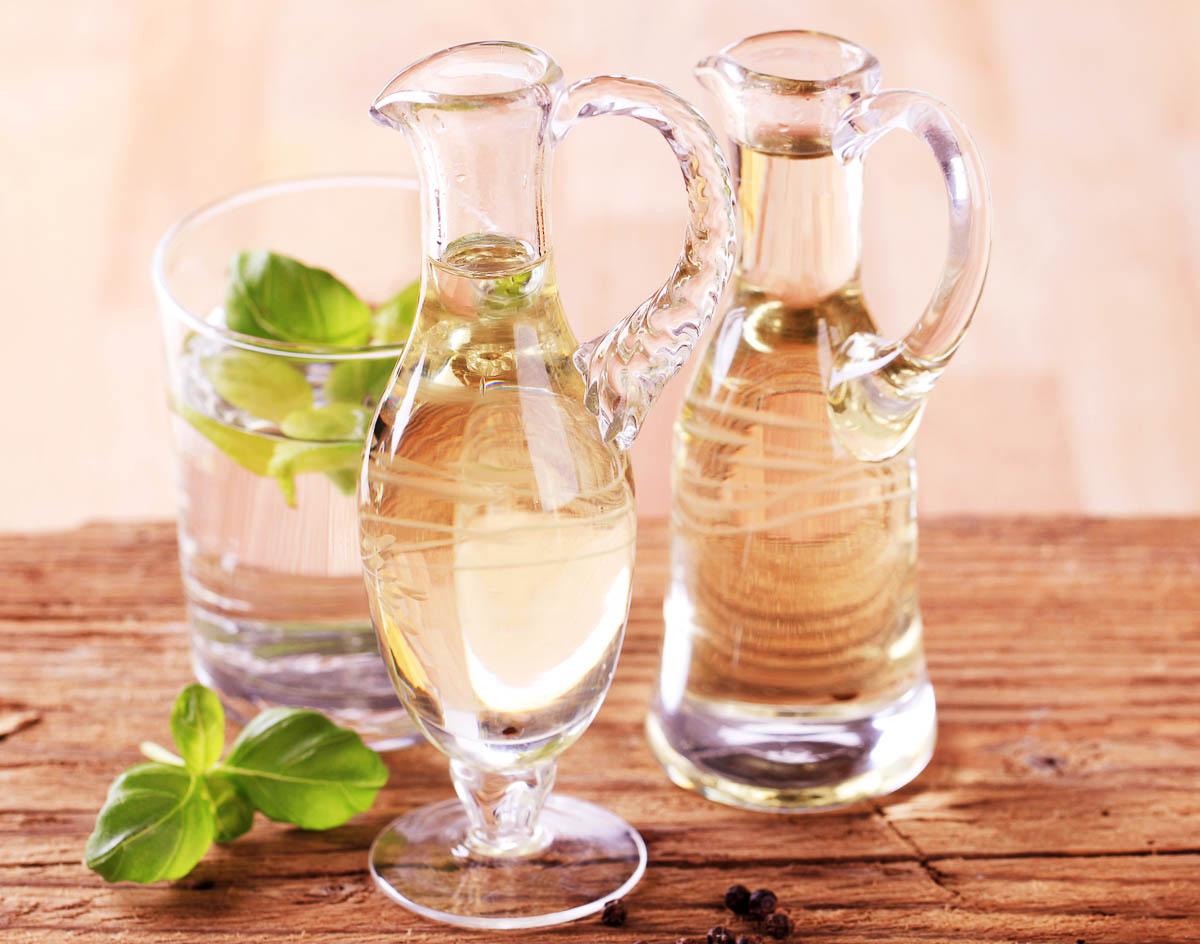
Dry Sherry
Dry sherry is a good substitute for rice wine in recipes. Sherry is a fortified wine with a higher alcohol content. The unique flavor of sherry has hints of dried fruits, nuts, and salt.
Dry sherry is also mild, like rice wine, and can be evenly substituted. It is important to use a dry sherry rather than “cooking sherry”, as the letter is somewhat sweet.
Pale dry sherry is a nice choice when substituting rice wine. And if you’re looking for a non-alcoholic substitute, substitute with sherry vinegar.
Substitution: Use a 1:1 ratio. For example, 1 tablespoon rice wine = 1 tablespoon dry sherry.
Best for: Any recipe that has mild but tangy, fruity, nutty, or salty flavors.

Dry White Wine
Dry white wine is a good option when replacing rice wine in a recipe. It creates a lovely aroma in cooked dishes with flavors that range from spicy to fruity, with mineral notes.
Sauvignon Blanc is a popular choice among chefs and wine lovers. It provides the perfect balance of tart and crisp to a recipe. You can add a little sugar or honey to make it slightly sweeter if needed.
Dry vermouth is another substitute that performs much like dry white wine.
Substitution: Use a 1:1 ratio. For example, 1 tablespoon rice wine = 1 tbsp. white wine.
Best for: Most dishes, especially those with spicy or fruity flavor profiles.

Gin
Gin can be used as a substitute for rice wine in certain recipes. It has some similarities to rice wines, but it has a higher alcohol content.
Gin is made from the juniper berry, which gives it a strong citrus scent and piney flavor. There is a mild sweetness to it, as well as a hint of bitterness. Gin works well as a substitute in dressings, sauces, and meat or fish recipes.
Substitution: Use a 1:1 ratio. For example, 1 tablespoon rice wine = 1 tablespoon gin.
Best for: Specific recipes. Understand the unique flavor of gin before using as a substitute. Works well in dressings, sauces, and meat or fish recipes.
White Vinegar and Apple Cider Vinegar
White distilled vinegar and apple cider vinegar are other kinds of vinegar that are high in acetic acid. This gives them a strong, tangy, and sometimes mildly sour taste.
However, both white vinegar and apple cider vinegar have a crisp, clean finish. This makes them a good alternative to rice wine in recipes. Note that using too much can be overpowering in the dish. Start with a smaller amount and add from there.
Substitution: Use 2:1 ratio. For example, 1 tablespoon rice wine = ½ tablespoon White vinegar or apple cider vinegar. Taste, and add more vinegar until the desired flavor is reached.
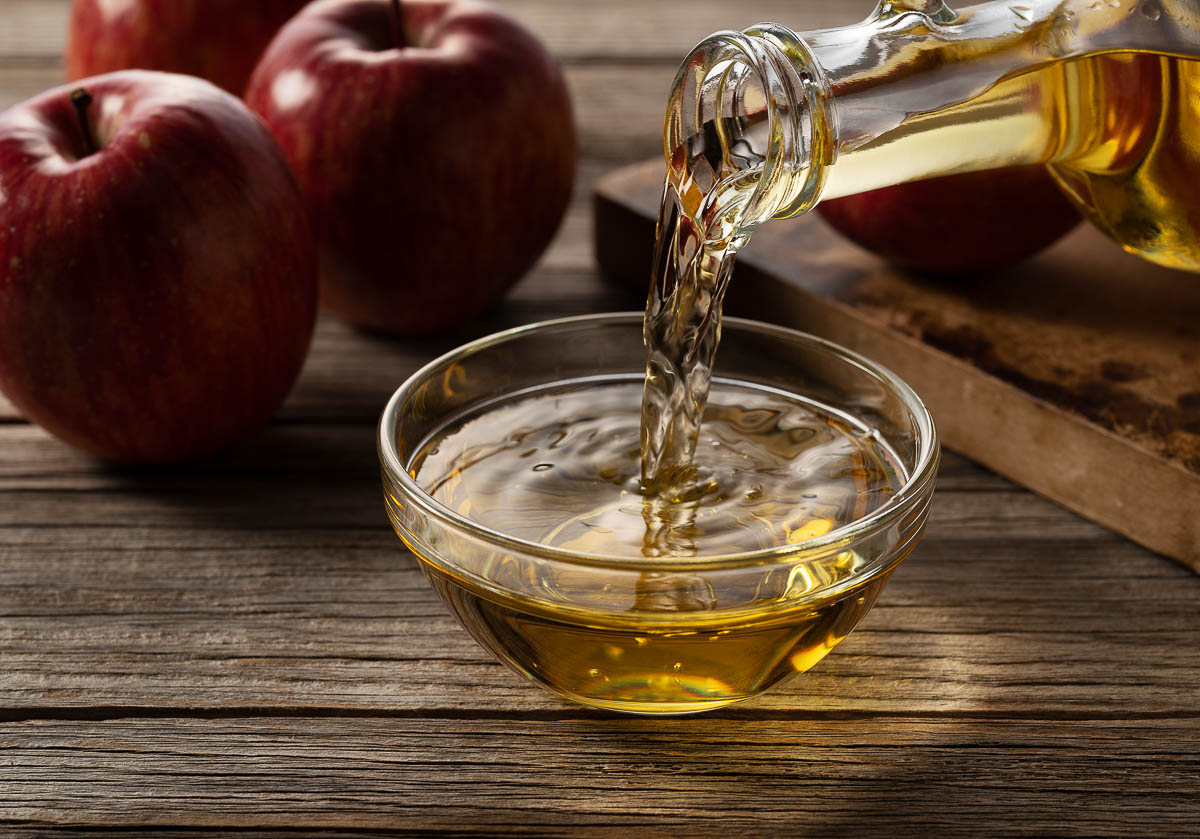
Champagne Vinegar
Champagne vinegar is a nice substitute for rice wine. Choosing this substitute will give your recipe a distinct flavor that is tangy yet sweet.
Champagne vinegar adds a mild and delicate flavor to dishes, much like rice wine. Rice wine and champagne vinegar are almost parallel in acidity and sweetness. Champagne vinegar works well in dressings, seafood dishes, dipping sauces, and reductions.
Substitution: Use a 1:1 ratio. For example, 1 tablespoon rice wine = 1 tablespoon champagne vinegar.
Best for: Sweet and tangy recipes. Popular substitute in dressings, seafood dishes, dipping sauces, and reductions.
Balsamic Vinegar
Balsamic vinegar has a rich taste due to its aging process. The deep flavor comes from at least 12 years of aging, which gives balsamic vinegar hints of fig, chocolate, and cherries.
Balsamic vinegar has a great balance of sweet and sour, making it a great substitute for rice wine. It does not tenderize or deodorize like rice wine, but it works well in other ways. Balsamic vinegar is best used as a substitute for marinades and salads.
Substitution: Use 1:1 ratio. For example, 1 tablespoon rice wine = 1 tbsp. Balsamic vinegar.
Best for: Marinades and salads.
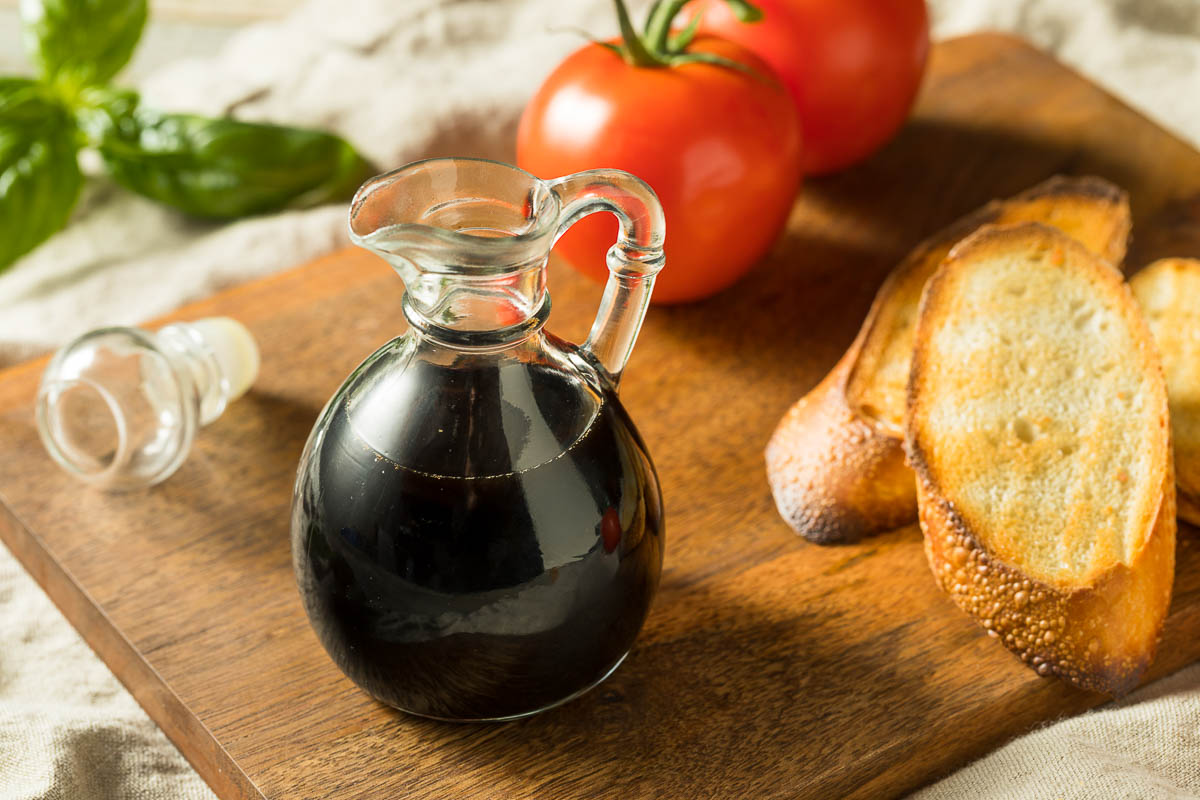
White Grape Juice
White grape juice is a good non-alcoholic substitute for rice wine. It adds fruity flavor and acidity to the recipe, much like Shaoxing rice wine. White grape juice is dryer than red grape juice, so it has the tanginess and sweetness of rice wine.
The acidity of white grape juice will act as a tenderizer. Adding the juice in stages will help you achieve the flavor you would like in your dish. White grape juice really shines when used as a substitute in marinades.
Substitution: Use a 1:1 ratio. For example, 1 tablespoon rice wine = 1 tablespoon white grape juice.
Best for: Chinese recipes (as a substitute for Shaoxing rice wine) and most marinades.

Apple Juice
Apple juice is a non-alcoholic alternative to rice wine. It adds rich flavors to recipes with its balance of sweetness and acidity. Apple juice will present fruitier notes than rice wine.It works well in vegetable recipes and salad dressings.
Substitution: Use a 1:1 ratio. For example, 1 tablespoon rice wine = 1 tablespoon apple juice.
Best for: Vegetable recipes and salad dressings.
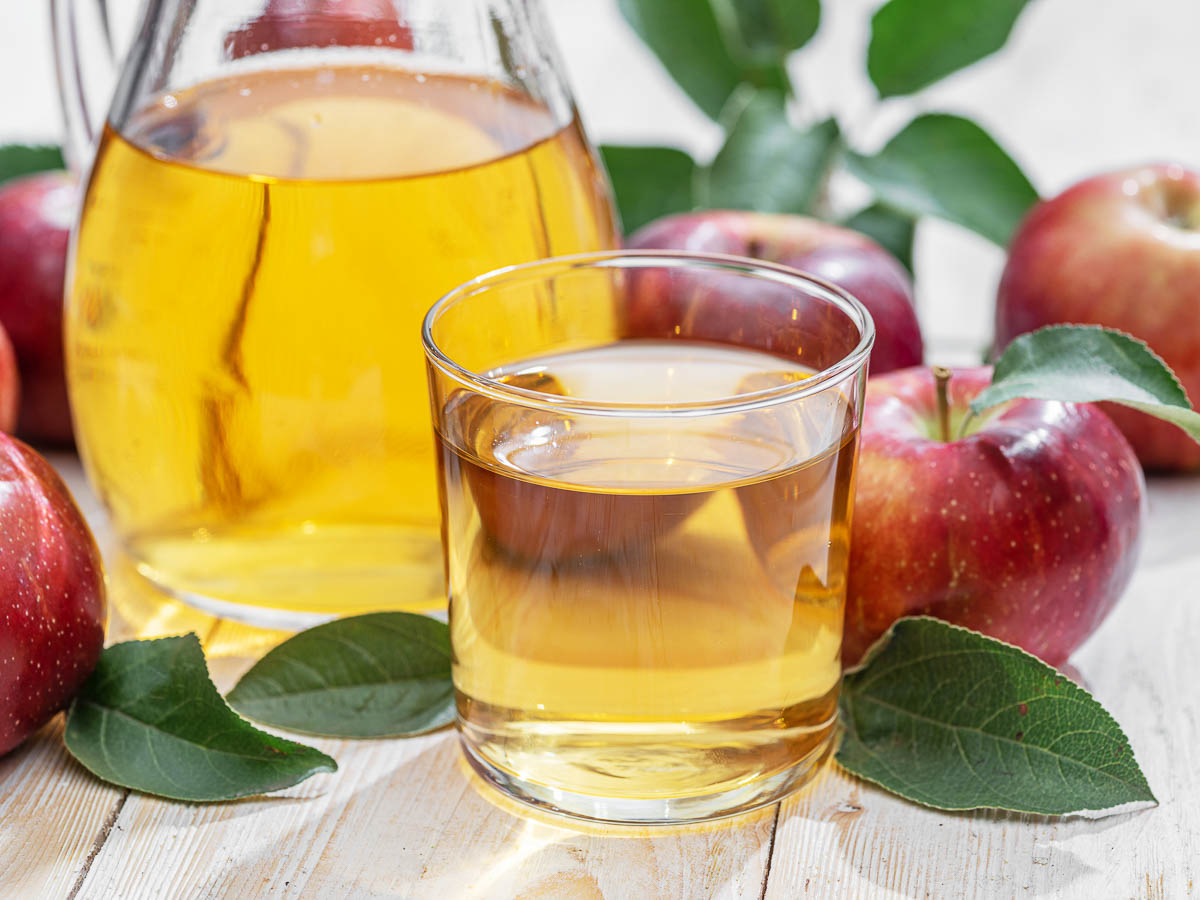
Lemon Juice
Lemon juice will give your recipe the acidity of rice wine. It does not deliver sweetness to the recipe, but you can add sweeteners if desired. Only a little lemon juice should be used as a substitute. This will avoid making the dish too tart. Add water if more liquid is required for your recipe.
Substitution: Use a 1:½ ratio. For example, 1 tablespoon rice wine = ½ tablespoon lemon juice. Add sweetener, like sugar or stevia, when a sweeter flavor is desired (to taste).
Best for: Recipes that are tart or mildly sweet.
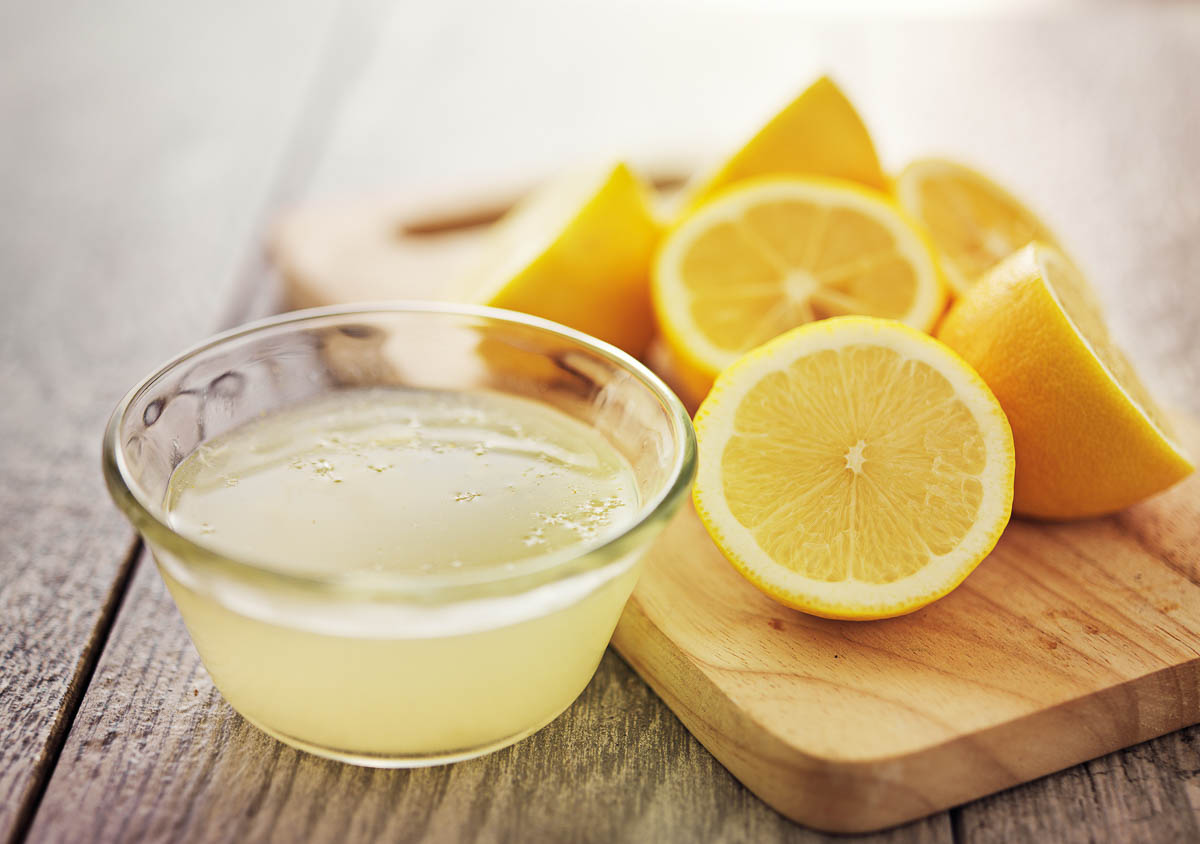
Chicken/Vegetable Stock
Vegetable stock can also be used to substitute rice wine in Asian stews. It adds flavor to your dish that compliments such recipes. However, it’s important to get the ratio right.
More vegetable stock will be needed to replace rice wine in most recipes. Continually add the vegetable broth until you reach your desired flavor. Chicken stock can substitute rice wine for a meatier taste.
Like the vegetable stock, add as much chicken broth as needed to reach your desired flavor. Sweeteners can be added to achieve a sweeter rice wine taste.
Substitution: Use 1:2+ ratio for both vegetable and chicken stock. For example, 1 tablespoon rice wine = 2+ tablespoon of stock.
Best for: Asian stews.

Conclusion
Rice wine is used in many recipes, most commonly Asian cuisine. Although it is most common in Asian dishes, rice wine delivers a sweet and tangy recipe that adds a unique flavor to any recipe you like!
Just remember, rice wines differ in taste and texture depending on the region they are from. Take time to figure out the specific flavors you are trying to replicate, then choose the best substitute from the list above. Happy cooking!
Do you have any other tried and true substitution recommendations? Please let me know in the comments!



Leave a Reply